
178
Glasby et al.: Marine Annelida from the South China Sea
Marine Annelida (excluding clitellates and siboglinids) from the South
China Sea
Christopher J. Glasby1*, Yen-Ling Lee2 & Pan-Wen Hsueh3
Abstract. An annotated checklist of 1257 species (73 families) of Annelida from the South China Sea (SCS) is
presented, including 289 species originally described from the region. The remaining extralimital records (968) are
likely to represent a mixture of species complexes, misidentifications or truly widespread species, and therefore
should be targets for future taxonomic study. The occurrence of each species within each of seven subregions is
reported, with the majority (72%) of species only occurring in a single region. The annelid diversity of Singapore
is estimated to be 121 species and 37 families. Families showing the highest levels of diversity in the SCS are the
Nereididae (134 species), Syllidae (100), Polynoidae (76), Serpulidae (72), Spionidae (60), and Eunicidae (59). By
comparison, both Nereididae and Syllidae are found to be more diverse in the SCS than the Australia region. For
the Nereididae, this is likely to be the result of this group’s capacity to tolerate low salinities, which would give
its members a selective advantage over other annelids in a region that experiences high freshwater input (river
flow and precipitation). In the case of Syllidae, it may be the result of taxonomic bias. The SCS region is home
to 19 species that are utilised directly by humans, either as bait, food for penaeid aquaculture or, in few cases,
human consumption.
Key words. Polychaeta, Sipuncula, Echiura, Myzostomida, checklist, distribution, diversity
RAFFLES BULLETIN OF ZOOLOGY Supplement No. 34: 178–234
Date of publication: 29 June 2016
http://zoobank.org/urn:lsid:zoobank.org:pub:21B8D064-67AB-487F-A63D-4AFAC7C01FC5
© National University of Singapore
ISSN 2345-7600 (electronic) | ISSN 0217-2445 (print)
1Museum and Art Gallery Northern Territory, PO Box 4646, Darwin, NT, Australia;
E-mail: chris.glasby@nt.gov.au (*corresponding author)
2Tropical Marine Science Institute, National University of Singapore, S2S, 18 Kent
Ridge Road, Singapore 119227; Email: tmsleeyl@nus.edu.sg
3Department of Life Sciences, National Chung Hsing University, 250 Kuo Kuang Rd.,
Taichung, Taiwan 402, R.O.C.; Email: pwhsueh@dragon.nchu.edu.tw
INTRODUCTION
This study was initiated as a result of the workshop
‘Workshop on Marine Ecosystems and Biodiversity of the
South China Sea, National University of Singapore’ held in
August 2012, which aimed to update the knowledge of the
marine biodiversity in the South China Sea (SCS). While
initially focused on polychaetes of the region, the study
was broadened to include all Annelida, the least inclusive,
putatively monophyletic group including the polychaetes. The
Annelida includes also the clitellates, siboglinids, sipunculans,
echiurans and myzostomids (Struck et al., 2011; Weigert et
al., 2014). Documenting the biodiversity of a monophyletic
taxon across an area of endemism such as the SCS allows
for a meaningful comparison of biodiversity with other
regions and contributes to future biogeographic studies.
In this study, we include all marine Annelida excluding
the clitellates (oligochaetes and leeches) and siboglinids
(pogonophorans and vestimentiferans), two groups likely
to be less well-represented in the SCS; it is intended that
these groups will be added in a subsequent study involving
relevant experts. This will enable a more complete analysis
of comparative biodiversity in the future.
The South China Sea is the largest semi-enclosed sea in the
western tropical Pacific Ocean. A deep central basin (>5000
m) is bordered by two broad continental shelves shallower
than 200 m, in the northwest and southwest (Sunda Shelf).
Other notable hydrodynamic features are the high freshwater
input from major river systems in China and Vietnam, heavy
monsoonal rainfall, and a net throughflow from the Pacific
to the Indian Ocean (Fang et al., 2009). The area includes
many shoals such as the Macclesfield Bank (= Zhongsha
Islands), oceanic islands, for example Spratly (= Nansha)
Islands and The Paracel (= Xisha) Islands, and continental
islands including Natuna and Anambas in the south SCS.
The wide range of habitats for annelids include deep-sea
and shelf sediments, coastal zones such as mangrove forests,
seagrass beds, coral reefs, as well as the brackish waters of
adjacent lakes and lagoons.
Previous checklists of the region include those of Paxton &
Chou (2000) and Salazar-Vallejo et al. (2014). The present
checklist differs considerably from these previous ones
in both taxonomic and geographic scope. Paxton & Chou
(2000) and Salazar-Vallejo et al. (2014) both had a broader
geographic scope: the former included the entire Taiwan and
Philippines marine regions, and the latter included a broadly
heterogeneous region comprising the East China Sea, SCS
(including Gulf of Thailand), Philippines and Sulu Sea, the
seas of Indonesia (Java, Banda and Celebes Seas), and the
western Pacific regions of southern islands of Japan and part
of Micronesia. The regional limits chosen by both Paxton &

179
RAFFLES BULLETIN OF ZOOLOGY 2016
Fig. 1. Seven geographic subregions within the South China Sea
(SCS), after Lane et al. (2000). 1 = Gulf of Thailand; 2 = Vietnam
and west of Hainan Island; 3 = Luzon, Palawan, and adjacent
waters off Philippines; 4 = North of Borneo, off Malaysia; 5 =
Bangka Straits, east of Sumatra, west of Borneo, east of peninsula
Malaysia, Singapore, Natuna Islands; 6 = South China, including
Hong Kong, southern Taiwan, Paracel Islands; 7 = Spratly Islands.
Chou (2000) and Salazar-Vallejo et al. (2014) reflected the
aims of their studies ― respectively, a geopolitical checklist
and a baseline for future taxonomic studies ― and so do
not represent homogeneous biogeographic entities under
any current biogeographic schema. In terms of taxonomic
scope, the previous studies considered polychaetes in a
much narrower sense, with both excluding the sipunculans
and echiurans, and Paxton & Chou (2000) excluding also
the siboglinids and myzostomids. Importantly, the study of
Salazar-Vallejo et al. (2014) listed only the species originally
described from the region, whereas the present study includes
both originally described species and also species occurring
in the region but originally described from elsewhere (=
extralimital species). Although the study of Paxton & Chou
(2000) includes all species reported from the region, they
overlooked many species records including those reported
by the Challenger (1875) and the U.S. Fisheries steamer
Albatross, 1907–1910, which were described in subsequent
years (McIntosh, 1885; Hoagland, 1920; Treadwell, 1920,
1926, 1931). Considering the different scopes of previous
and the present study and the omissions, comparison between
them is not possible.
The goal of the present study is to document the annelid
taxa and their distributions in the SCS, by updating existing
inventories and adding taxa missed by Paxton & Chou (2000)
and Salazar-Vallejo et al. (2014). By focussing on both a
monophyletic taxonomic group and a monophyletic area
(i.e., an area of endemism), we are able to make some initial
comparisons between the diversity of Annelida (and various
families) in the SCS, and other large areas of endemism (=
Large Marine Ecosystems; LMEs). The present checklist
contains all published records in the systematic literature
of annelid taxa (excluding clitellates and siboglinids)
occurring in the SCS, plus an unpublished list of species
level identifications reported at the International Polychaete
Conference, Sydney, August 2013, collected during the recent
Comprehensive Marine Biodiversity Survey of Singapore
(December 2010 – April 2015).
MATERIAL AND METHODS
Taxonomic scope. The primary taxonomic units in the study
are valid species as indicated in the World Register of Marine
Species WoRMS (http://www.marinespecies.org/; accessed
November–December 2015). Current generic and familial
assignments also follow WoRMS. In keeping with current
trends in polychaete taxonomy, subspecies and varieties are
elevated to species level and subgenera are elevated to full
genus level (sipunculans and echiurans are the exceptions).
Where relevant, the original binomen/trinomen is provided
under Taxonomic Remarks (Table 1) for historical continuity.
In addition to valid species, morphospecies identified in
taxonomic studies are also included; in these cases the
author and year is used in the species name to identify
unequivocally the taxon.
Taxonomic names listed in ecological papers were excluded,
as in general they are not verifiable by a voucher specimen.
Also, identifications based on personal communications
were excluded (for example, the entries from Taiwan in
Paxton & Chou (2000), with Hsieh as pers. comm.). Species
identifications have not been verified; those originally
described from Arctic, Boreal or Subantartic regions were
assumed to be misidentifications.
In addition to the basic goal of documenting annelid
biodiversity of the region, we also flag species utilised by
humans for purposes such as bait for fishing and aquaculture
food. People in the countries bordering the SCS are probably
the most enthusiastic users of annelid resources of any
region on Earth.
Geographic scope. The external boundaries of the SCS and
subregions follow those established by Lane et al. (2000) for
echinoderms (Fig. 1). The external boundaries encompass
two LMEs identified by the National Oceanographic and
Atmospheric Administration, ‘South China Sea’ and the
‘Gulf of Thailand’ (http://www.lme.noaa.gov/). The SCS
extends from the Tropic of Cancer in the north to about
3°S in the south, i.e., including Bangka Belitung Islands
(Fig. 1). The southern limit of the SCS, which is perhaps
the most debated of all the boundaries, corresponds also to
that used by the International Hydrographic Organization.
Within the SCS we use the seven subregions identified by
Lane et al. (2000) (Fig. 1), which were based on proximity
from coast; they provide for a preliminary means of area
comparison rather than a strict biogeographic analysis.
Subregion scoring was by presence-only, that is absence of

180
Glasby et al.: Marine Annelida from the South China Sea
Table 1. Annelid species of the South China Sea listed alphabetically under each family. Species in bold were originally
described from the South China Sea. Species annotated with * indicates species occurring in Singapore.
Family Genus (Subgenus) Species Species Authority Taxonomic Remarks Presence by
Subregions
Aberantidae Aberranta sulcata Mackie, Pleijel &
Rouse, 2005
as Aberranta sp.
(Mackie et al., 1993)
6
Acoetidae Acoetes cf. grubei (Kinberg, 1856) 2
Acoetidae Acoetes flagelliformis (Wesenberg-Lund,
1949)
2
Acoetidae Acoetes jogasimae Izuka, 1912 as Panthalis jogasimae
Izuka, 1912
6
Acoetidae Acoetes melanonota (Grube, 1876) as Polyodontes
melanotus (Grube,
1876); synonym
Polyodontes gracilis
Pflugfelder, 1932
236
Acoetidae Euarche maculosa (Treadwell, 1931) as Eupanthalis
maculosa (Treadwell,
1931)
6
Acoetidae Eupanthalis edriophthalma (Potts, 1910) 2
Acoetidae Eupanthalis kinbergi McIntosh, 1876 2
Acoetidae Eupanthalis lepidus (Shen & Wu, 1993) 7
Acoetidae Neopanthalis muricata Shen & Wu (1993) as N. muricatus Shen &
Wu, 1993 in Wu et al.
(1997)
7
Acoetidae Neopanthalis pelamida Strelzov, 1968 2
Acoetidae Neopolyodontes lepidus Shen & Wu (1993) 6
Acoetidae Panthalis oerstedi Kinberg, 1856 2
Acoetidae Polyodontes atromarginatus Horst, 1917 2
Acoetidae Polyodontes maxillosus (Ranzani, 1817) 26
Acoetidae Zachsiella nigromaculata (Grube, 1878) Zachsiella striata
Buzhinskaja, 1982
236
Alciopidae Alciopa reynaudii Audoine & Milne
Edwards, 1833
as Greefia celox
(Greeff, 1876) in
Fauvel (1939)
2
Alciopidae Alciopina albomaculata (Levinsen, 1885) as Corynocephalus
albo-maculatus
Levinsen, 1885 (Fauvel,
1939)
2
Alciopidae Alciopina parassitica Claparède &
Panceri, 1867
6
Alciopidae Krohnia lepidota (Krohn, 1845) 6
Alciopidae Naiades cantrainii* Delle Chiaje, 1830 as Alciopa cantrainii
in Fauvel (1936, 1939)
256
Alciopidae Plotohelmis alata Chamberlin, 1919 6
Alciopidae Plotohelmis capitata (Greeff, 1876) 56
Alciopidae Rhynchonereella angelina (Kinberg, 1866) 26
Alciopidae Rhynchonereella fulgens Greeff, 1885 2

181
RAFFLES BULLETIN OF ZOOLOGY 2016
Family Genus (Subgenus) Species Species Authority Taxonomic Remarks Presence by
Subregions
Alciopidae Rhynchonereella gracilis Costa, 1864 6
Alciopidae Rhynchonereella moebii (Apstein, 1893) 5
Alciopidae Rhynchonereella petersii (Langerhans, 1880) 6
Alciopidae Rhynchonereella xishaensis Shen, 1978 6
Alciopidae Torrea candida (Delle Chiaje, 1841) as Asterope candida
(Delle Chiaje, 1841) in
Fauvel (1939)
27
Alciopidae Vanadis crystallina Greeff, 1876 as Vanadis augeneri
Benham, 1929 in
Fauvel (1936)
26
Alciopidae Vanadis formosa Claparède, 1870 Vanadis fuscapunctata
Treadwell, 1906
6
Alciopidae Vanadis longissima (Levinsen, 1885) 7
Alciopidae Vanadis minuta Treadwell, 1906 56
Ampharetidae Ampharete acutifrons (Grube, 1860) probable
misidentification
6
Ampharetidae Ampharete arctica Malmgren, 1866 probable
misidentification
6
Ampharetidae Ampharete cf. macrobranchia Caullery, 1944 2
Ampharetidae Ampharete sp. Nakao et al.,
1989
5
Ampharetidae Amphicteis gunneri (Sars, 1835) probable
misidentification
26
Ampharetidae Amphicteis scaphrobranchiata Moore, 1906 probable
misidentification
6
Ampharetidae Anobothrus cf. gracilis Malmgren, 1866 6
Ampharetidae Anobothrus sp. Muir &
Bamber, 2008
6
Ampharetidae Auchenoplax crinita Ehlers, 1887 25
Ampharetidae Eclysippe sp. Al-Hakim &
Glasby, 2004
5
Ampharetidae Isolda sibogae Caullery, 1944 2
Ampharetidae Lysippe labiata Malmgren, 1866 probable
misidentification
6
Ampharetidae Melinna fauchaldi Gallardo, 1968 2
Ampharetidae Paramphicteis angustifolia (Grube, 1878) 6
Ampharetidae Paramphicteis cf. weberi (Caullery, 1944) Amphicteis cf. weberi 5
Ampharetidae Pavelius sp. Al-Hakim &
Glasby, 2004
5
Ampharetidae Samytha gurjanovae Uschakov, 1950 probable
misidentification
6
Ampharetidae Samythella dubia (Gallardo, 1968) Eusamytha dubia
Gallardo, 1968
2
Amphinomidae Amphinome jukesi Baird, 1868 Amphinome pulchra
Horst, 1912
6

182
Glasby et al.: Marine Annelida from the South China Sea
Family Genus (Subgenus) Species Species Authority Taxonomic Remarks Presence by
Subregions
Amphinomidae Amphinome rostrata (Kinberg, 1867) Amphinome luzoniae
Kinberg, 1867;
Aphodita rostrata
Pallas, 1766
236
Amphinomidae Chloeia entypa Chamberlin, 1919 3
Amphinomidae Chloeia flava* (Pallas, 1766) 2356
Amphinomidae Chloeia fusca McIntosh, 1885 6
Amphinomidae Chloeia inermis Quatrefages, 1865 6
Amphinomidae Chloeia parva* Baird, 1870 256
Amphinomidae Chloeia rosea Potts, 1909 3
Amphinomidae Chloeia sp. Gallardo, 1967 2
Amphinomidae Chloeia violacea Horst, 1910 256
Amphinomidae Eurythoe complanata* (Pallas, 1766) 2356
Amphinomidae Eurythoe parvecarunculata Horst, 1912 26
Amphinomidae Hipponoe gaudichaudi Audouin & Milne
Edwards, 1830
2
Amphinomidae Linopherus hirsuta (Wesenberg-Lund,
1949)
26
Amphinomidae Linopherus hirsuta (Wesenberg-Lund,
1949)
as Pseudeurythoe
hirsuta Wesenburg-
Lund, 1949
2
Amphinomidae Linopherus oligobranchia (Wu, Shen & Chen,
1975)
as Pseudeurythoe
oligobranchia Wu,
Shen & Chen, 1975
56
Amphinomidae Linopherus paucibranchiata (Fauvel, 1932) as Pseudeurythoe
paucibranchiata Fauvel,
1932 (Fauvel, 1939)
2
Amphinomidae Linopherus sp. 2 Al-Hakim &
Glasby, 2004
as Pseudeurythoe sp. 2
Al-Hakim & Glasby,
2004
5
Amphinomidae Notopygos gigas Horst, 1911 6
Amphinomidae Notopygos labiatus Fauvel, 1932 3
Amphinomidae Notopygos ornata Grube, 1856 3
Amphinomidae Notopygos sibogae Horst, 1911 6
Amphinomidae Notopygos subpragigas Uschakov & Wu,
1962
6
Amphinomidae Notopygos variabilis Potts, 1909 3
Amphinomidae Paramphinome indica Fauvel, 1932 6
Amphinomidae Pareurythoe borealis (Sars, 1862) probable
misidentification
6
Amphinomidae Pherecardia parva Monro, 1924 6
Amphinomidae Pherecardia striata (Kinberg, 1857) 236
Aphroditidae Aphrodita aculeata Linnaeus, 1758 6
Aphroditidae Aphrodita alta Kinberg, 1856 2
Aphroditidae Aphrodita australis Baird, 1865 6




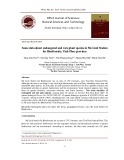
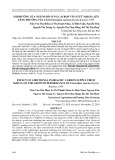
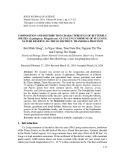
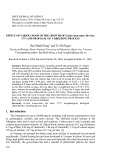
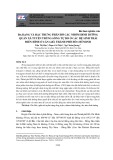
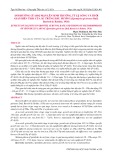
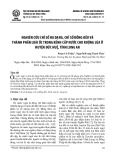


![Bài tập Đa dạng thế giới sống [kèm đáp án/ hướng dẫn giải]](https://cdn.tailieu.vn/images/document/thumbnail/2025/20251123/thaohoang9203@gmail.com/135x160/5861763951302.jpg)











![Câu hỏi trắc nghiệm Tế bào nhân sơ [mới nhất]](https://cdn.tailieu.vn/images/document/thumbnail/2025/20251104/xuangiao2601/135x160/40491762309854.jpg)
